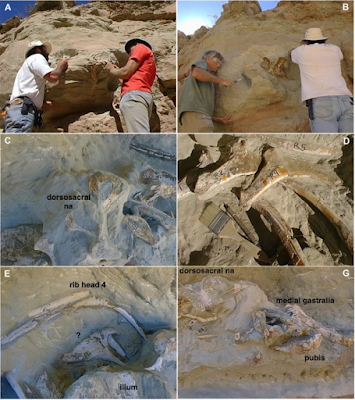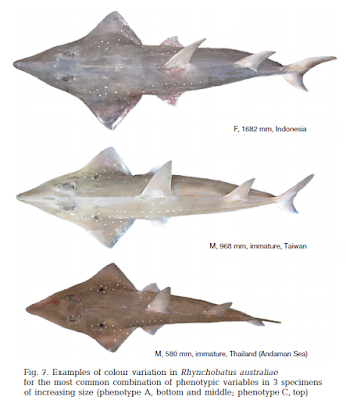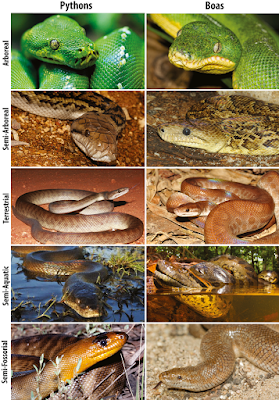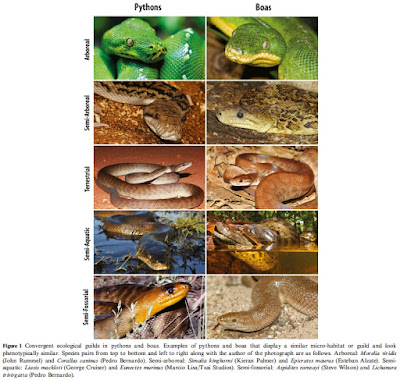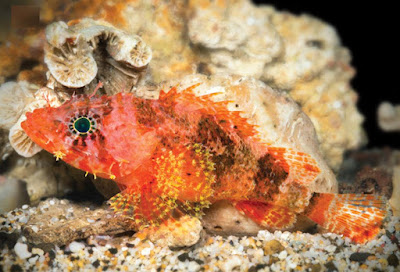[Most Recent Entries] [Calendar View]
Thursday, July 21st, 2016
| Time | Event | ||||
| 10:44a | [Paleontology • 2016] Murusraptor barrosaensis • A New Megaraptoran Dinosaur (Theropoda, Megaraptoridae) from the Late Cretaceous of Patagonia
Abstract A skeleton discovered in the Upper Cretaceous Sierra Barrosa Formation (Turonian-Coniacian) of Neuquén Province, Argentina represents a new species of theropod dinosaur related to the long snouted, highly pneumatized Megaraptoridae. The holotype specimen of Murusraptor barrosaensis n.gen et n.sp. (MCF-PVPH-411) includes much of the skull, axial skeleton, pelvis and tibia. Murusraptor is unique in having several diagnostic features that include anterodorsal process of lacrimal longer than height of preorbital process, and a thick, shelf-like thickening on the lateral surface of surangular ventral to the groove between the anterior surangular foramen and the insert for the uppermost intramandibular process of the dentary. Other characteristic features of Murusraptor barrosaensis n.gen. et n. sp.include a large mandibular fenestra, distal ends of caudal neural spines laterally thickened into lateral knob-like processes, short ischia distally flattened and slightly expanded dorsoventrally. Murusraptor belongs to a Patagonian radiation of megaraptorids together with Aerosteon, Megaraptor and Orkoraptor. In spite being immature, it is a larger but more gracile animal than existing specimens of Megaraptor, and is comparable in size with Aerosteon and Orkoraptor. The controversial phylogeny of the Megaraptoridae as members of the Allosauroidea or a clade of Coelurosauria is considered analyzing two alternative data sets. Systematic Paleontology Dinosauria Owen, 1842 Theropoda Marsh, 1881 Tetanurae Gauthier, 1986 Megaraptora Benson, Carrano, Brusatte, 2010 Megaraptoridae Novas, Agnolin, Ezcurra, Porfiri, Canale 2013 Murusraptor barrosaensis new genus, new species Etymology: “Murus” is a Latin term for “wall”, referring to the discovery of the specimen in the wall of a canyon; “barrosaensis” alludes to Sierra Barrosa, the locality where it was collected. Holotype: Partial skeleton (Museo Carmen Funes MCF-PVPH-411) includes a complete braincase, lacrimal, prefrontal, postorbital, quadrate, pterygoid, ectopterygoid, teeth, twelve vertebrae, eleven thoracic ribs, one haemal arch, several gastralia, a manual ungual, complete left ilium, part of right ilium, proximal ends of the pubes, distal ends of the ischia, the right tibia, and a calcaneum (Fig 1).
Diagnosis: Murusraptor barrosaensis is unique in having anterodorsal process of lacrimal longer than height of preorbital process, and a thick, shelf-like thickening on the lateral surface of surangular ventral to the groove between the anterior surangular foramen and the insert for the uppermost intramandibular process of the dentary. Two other characters are only known in Murusraptor; sacral ribs hollow and tubelike; short ischia distally flattened and slightly expanded dorsoventrally. These characters are equivocal because they are unknown in other members of the clade. Also, the following combination of diagnostic characters was obtained after running the phylogenetic analysis using TNT: Character 95, basipterygoid processes of the basisphenoid located anteroventrally, with basisphenoid recess opening posterodorsally (also present in coelophysids); Character 98, basisphenoid with a shallow embayment indentation between basal tubera and basipterygoid processes (also present in Cryolophosaurus and basal theropods); Character 216, rather straight chevrons (reversal to the plesiomorphic condition). Rodolfo A. Coria and Philip J. Currie. 2016. A New Megaraptoran Dinosaur (Dinosauria, Theropoda, Megaraptoridae) from the Late Cretaceous of Patagonia. PLoS ONE. 11(7): e0157973. DOI: 10.1371/journal.pone.0157973 Another Brick in the “Murus”: Meet the newest Megaraptoran theropod, Murusraptor http://blogs.plos.org/paleocomm/2016/07/2 | ||||
| 2:32p | [Ichthyology • 2016] Genetic and Phenotypic Diversity in the Wedgefish Rhynchobatus australiae, A Threatened Ray of High Value in the Shark Fin Trade
Abstract Rhynchobatus spp. (wedgefishes) are large benthopelagic shark-like rays with fins that are highly prized in the international shark fin trade. They are among the most threatened groups of sharks and rays globally. While Rhynchobatus spp. are known to be under considerable fishing pressure as a group, taxonomic confusion among species within the genus has compromised species-specific fishery and demographic data that are urgently needed for developing effective management strategies. Rhynchobatus australiae (Whitley, 1939) is a large Indo-West Pacific species reaching 2 to 3 m that is classified as Vulnerable on the IUCN Red List. This study combines new empirical data from field surveys with data obtained from verified reference specimens to investigate genetic and phenotypic variation in R. australiae and its relative incidence in fisheries. R. australiae dominated Rhynchobatus catch in fisheries surveys across Southeast Asia, and was the most commonly recorded species of the genus in Australia (94% and 58% of captures respectively, n = 207). Study specimens were consistent with a single species with moderate spatial mtDNA variation (ΦST = 0.198, p < 0.0001). We show that R. australiae can be reliably differentiated from other Indo-Pacific species with nadh2 (1044bp), and a section of the control region (456bp) short enough to amplify DNA from processed fins in international trade. We document aspects of morphological variability to assist in the description of external characters that differentiate this species. This is the first range-wide intraspecific study on any wedgefish species, and provides the most complete synthesis of mtDNA data to date for identifying Rhynchobatus fins in the global shark fin trade. KEY WORDS: Wedgefishes · Rays · Shark fin trade · Phylogeography · Southeast Asia Jenny L Giles, Cynthia Riginos, Gavin Naylor, Dharmadi Dharmadi and Jennifer Robyn Ovenden. 2016. Genetic and Phenotypic Diversity in the Wedgefish Rhynchobatus australiae, A Threatened Ray of High Value in the Shark Fin Trade. Marine Ecology Progress Series. 548. DOI: 10.3354/meps11617 | ||||
| 2:49p | [Herpetology • 2016] Parallel Selective Pressures Drive Convergent Diversification of Phenotypes in Pythons and Boas
Abstract Pythons and boas are globally distributed and distantly related radiations with remarkable phenotypic and ecological diversity. We tested whether pythons, boas and their relatives have evolved convergent phenotypes when they display similar ecology. We collected geometric morphometric data on head shape for 1073 specimens representing over 80% of species. We show that these two groups display strong and widespread convergence when they occupy equivalent ecological niches and that the history of phenotypic evolution strongly matches the history of ecological diversification, suggesting that both processes are strongly coupled. These results are consistent with replicated adaptive radiation in both groups. We argue that strong selective pressures related to habitat-use have driven this convergence. Pythons and boas provide a new model system for the study of macro-evolutionary patterns of morphological and ecological evolution and they do so at a deeper level of divergence and global scale than any well-established adaptive radiation model systems. Keywords: Adaptive radiation, ecomorphology, henophidia, snakes.
Damien Esquerré and J. Scott Keogh. 2016. Parallel Selective Pressures Drive Convergent Diversification of Phenotypes in Pythons and Boas. Ecology Letters. 19: 800–809. DOI: 10.1111/ele.12620 Convergent Evolution between Pythons and Boas http://www.anoleannals.org/2016/06/15/co | ||||
| 4:25p | [Ichthyology • 2016] Scorpaenodes barrybrowni • A New Deep-Reef Scorpionfish (Teleostei, Scorpaenidae, Scorpaenodes) from the southern Caribbean with Comments on Depth Distributions and Relationships of western Atlantic Members of the Genus
Abstract A new species of scorpionfish, Scorpaenodes barrybrowni Pitassy & Baldwin, sp. n. which is described, was collected during submersible diving in the southern Caribbean as part of the Smithsonian’s Deep Reef Observation Project (DROP). It differs from the other two western Atlantic species of the genus, S. caribbaeus and S. tredecimspinosus, in various features, including its color pattern, having an incomplete lateral line comprising 8–10 pored scales, tending to be more elongate, usually having the 11th–12th pectoral-fin rays elongate, and by 20–23% divergence in the cytochrome c oxidase I (COI) DNA barcode sequences. It further differs from one or the other of those species in head spination and in numbers of soft dorsal-fin rays, pectoral-fin rays, and precaudal + caudal vertebrae. Inhabiting depths of 95–160 m, the new species is the deepest western Atlantic member of the genus (S. caribbaeus occurs at depths < 35 m and S. tredecimspinosus from 7 to 82 m). DNA barcode data do not rigorously resolve relationships among the ten species of the genus for which those data are available. Keywords: Manned submersible, Smithsonian Deep Reef Observation Project (DROP), Substation Curaçao, ocean exploration, integrative taxonomy, phylogeny Diagnosis: A species of Scorpaenodes distinguished by the following combination of characters: dorsal-fin soft rays 8; pectoral-fin rays 16–17, rays 11–12 (from uppermost ray) noticeably longer than rest in smallest four type specimens; caudal-fin rays 25–27; vertebrae 24 (8 precaudal + 16 caudal); spines on suborbital ridge 4 (rarely 5); secondary suborbital ridge spines absent; two prominent round to oblong pores in suborbital sensory canal immediately ventral to suborbital ridge; coronal, interorbital, upper post temporal and postorbital spines absent; lateral line incomplete, 8-10 pored scales extending from behind supracleithral spine to mid body; cirri associated with nasal, supraocular, and parietal spines and present on posteroventral projection of lacrimal and upper left quadrant of orbit; no cirri associated with postocular, tympanic, supracleithral, and lower posttemporal spines; body relatively elongate, depth at origin of dorsal fin 30–32% SL, depth at caudal peduncle 9–10% SL. Color in life bright orange-red with several reddish-brown bars on posterior portion of trunk; pectoral fin with vivid yellow spots interspersed with bright orange-red spots. Distribution: Known from Curaçao and Bonaire in the southern Caribbean, and Dominica in the Windward Islands, eastern Caribbean. Habitat: Collected off Curaçao at 95–160 m on rocky substrata. Off Dominica, USNM 438436 was collected on a vertical rock wall. Etymology: Named in honor of Barry Brown, Substation Curaçao and free-lance photographer (www.coralreefphotos.com), who has patiently, diligently, and expertly taken photographs of hundreds of fishes and invertebrates captured alive by DROP investigators. He has generously shared his photographs, and they have enhanced numerous scientific and educational publications. An example of his work is here featured in Fig. 2A. Common name: Stellate Scorpionfish, in reference to the yellow, stellate chromatophores on the pectoral fin in life and the radiating pigment markings accentuating the eye. Spanish common name: Escorpión Estrellado. Carole C. Baldwin, Diane E. Pitassy and D. Ross Robertson. 2016. A New Deep-Reef Scorpionfish (Teleostei, Scorpaenidae, Scorpaenodes) from the southern Caribbean with Comments on Depth Distributions and Relationships of western Atlantic Members of the Genus. ZooKeys. 606: 141-158. DOI: 10.3897/zookeys.606.8590 |
| << Previous Day |
2016/07/21 [Calendar] |
Next Day >> |


